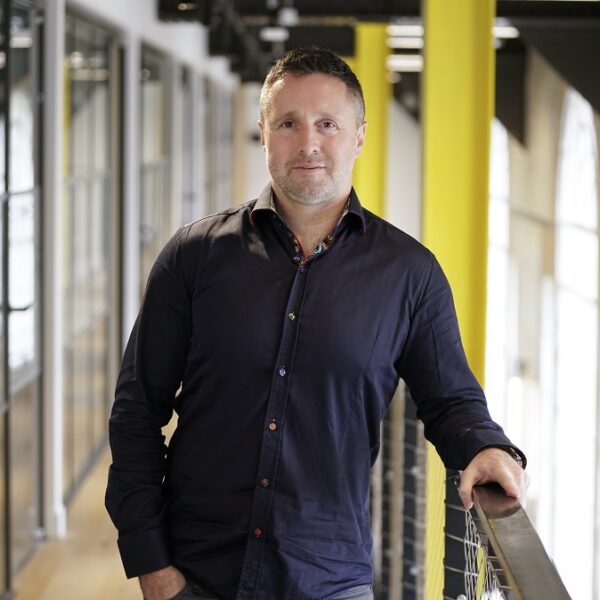Insight
Localised attitude to retail asset enhancement will revitalise UK’s towns and cities
16 May 2023

Kieran Bradley
Director
The industry places a big focus on re-use of assets on the journey to net zero carbon. While this is a huge benefit in achieving sustainability goals, asset enhancement also holds huge potential to transform lives and revitalise our cites, particularly driven by re-use of retail space. Director of Architecture Kieran Bradley examines the opportunities and challenges, and how the overall approach must be embedded in the local bigger picture.
Creating central activity hubs for the future
With consumer habits changing so quickly, the retail industry is one of many that must evolve its assets and operations.
With the increase of online shopping, one-mile delivery zones, and hybrid working, the high street is suffering a decreased footfall. Experience-led destinations are required to draw the footfall back.
Without diversification, the town and city centres in our country could completely disappear. The country's vacant retail spaces present the ideal opportunity to purpose existing structures in prime locations to help create 24/7 multi-use environments that support shifting and evolving markets.
Even though the size of asset enhancement could range from a one-off shop unit to a whole shopping centre or even larger, each scheme must be approached individually based on the existing asset at hand, the requirements, and the solutions needed to meet the local challenges. No matter the scale, these projects need to be considered as part of a bigger picture, making sure that the creative ways in which space is repurposed suits the needs of communities and serves to prompt growth rather than stagnation.
Town and city space is used in a variety of ways, sometimes with segmentation of use. We need to understand how any new development – repurposed or otherwise – will coordinate with the immediate and wider resources. This often means coordination with the local authority on change of use, ensuring cohesion with and improvement of the area.
For instance, out-of-town secondary retail spaces are being repurposed to include additional essential community services like healthcare hubs alongside existing retail space, making the lives of people living there more convenient. Meanwhile, university cities need to ensure that facilities like student accommodation are spread across the wider map to generate pockets of local spending throughout the city and preventing extremes in overpopulation and underpopulation at various points in the academic year.
When analysing requirements, we must keep the 15-minute city concept in mind to reutilise space and enhance assets in a way that has maximum impact on the community through the development of multi-purpose destinations. Naturally, the idea also has close ties to the journey to net zero, with closer proximity to all amenities encouraging more sustainable travel.
Retail repurposing restrictions on design
Of course, we focus on creating aesthetic solutions with designs that are environmentally friendly, use sustainable materials and adhere to the strictest standards of compliance. However, asset enhancement does not just involve demolishing everything and starting over, so there will inevitably be challenges that come from the existing structure.
Whether these challenges are more aesthetic or structural, our process begins on site to review and work our details with the client, allowing us to identify the key challenges we need to address in our designs.
There will be structural limitations, especially when refitting around the building’s central structure, where the concrete core and floor slabs will contain the majority of embodied carbon. When reorienting space around this central structure, a change in purpose may see additional restrictions from the loadings and head heights. These constraints, when combined with strict compliance requirements such as fire safety, mean that we must develop truly bespoke solutions for every individual challenge.
Large floorplates and limited natural day light are typical of retail assets, so light access within a space needs to be carefully considered. Meanwhile, 'back of house' delivery and waste areas need to be carefully repurposed based on their new use.
Equally, opportunity is always there, and certain spaces suit some more than others. Ground level parking resources may offer additional land for newer structures for further enhancement or provide extra space to ensure aesthetic design, such as landscape architecture. Meanwhile, the trickiest sounding spaces like basement retail units without exterior windows may be ideal for the right use. This exact example is why escape rooms are often found in fairly unique spaces as they in fact benefit from less outward facing spaces.
Asset enhancement across every sector
Retail is not the only sector that is examining diversification and enhancement – this is a practice taking place across the board, particularly for sectors with aging buildings.
The industrial sector has very large spaces to consider, focusing on how to enhance older warehouses and distribution centres to support last mile delivery to consumers as the rise of internet shopping shows no sign of slowing.
In order to increase their safety and general condition, older buildings on educational and healthcare estates need urgent attention. This opens the opportunity for enhancing the overall space by adding new services or community use for example.
Lastly, office and commercial space is undergoing a significant period of transformation. Commercial landlords need to meet the required Minimum Energy Efficiency Standards requirements to continue letting their assets, while employers are focused on providing revitalised space for productive hybrid working arrangements. Meanwhile, there are some instances where office requirements are reduced, and since many EPC Grade F offices across the nation are currently unable to be rented, there is opportunity for additional mixed-use developments and residential space to be developed to meet demand.
The next chapter of construction ultimately revolves around this practice of asset enhancement, which emphasises a more sustainable built environment that improves end-user and community needs, strives for net zero goals, maximises value and extends lifespan of buildings, and in some cases increases local economic spend.